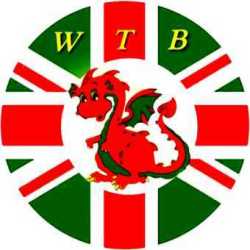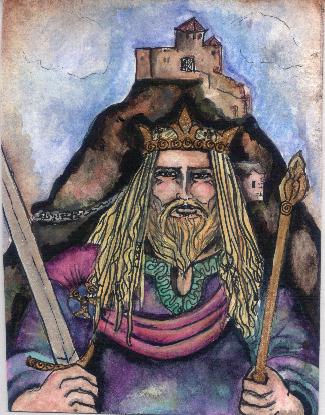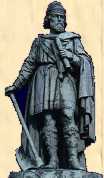 |
|||||||||||||||||||||||||||||||||||||||||||||||||||||||
THE ANGLO SAXON WESSEX MONARCHY |
|||||||||||||||||||||||||||||||||||||||||||||||||||||||
  For events and news please follow us on Facebook https://www.facebook.com/wessextouristboard Our Website : http://www.wessextouristboard.org.uk |
|||||||||||||||||||||||||||||||||||||||||||||||||||||||
| Email : info@wessextouristboard.org.uk Tel and What's App : (+44) (0)7510419768 | |||||||||||||||||||||||||||||||||||||||||||||||||||||||
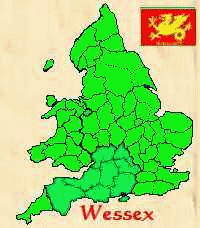 Wessex is
the name of the former kingdom which originated
in south-central England and expanded to cover
the whole of the south west. The Encyclopaedia
Britannica lists Hampshire, Wiltshire, Somerset
and Dorset as the "permanent nucleus" of Wessex.
THE KINGS of WESSEX
At the end of Roman Times , there
were lots of Saxon Mercenaries ( hired soldiers)
living in Britain. The Roman government had paid
them to protect many of the towns.
Archaeologists have dug up many graves from this time. Some of the skeletons were wearing special belts and carrying spears. They are thought to be Saxon Mercenaries because similar objects have been found in Saxon graves in Europe. The Saxons were a large and powerful Germanic people located in what is now northwestern Germany and the eastern Netherlands (but, interestingly not in the area that is today known as Saxony). They are first mentioned by the geographer Ptolemy as a people of southern Jutland and present-day Schleswig-Holstein, from which they appear subsequently to have expanded to the south and west. The word 'Saxon' derives from the word 'Sax' which means "one-edged sword". Many germanic tribes took names from their weapons, such as the Langobard tribe. Some Saxons, along with Angles, Jutes and Frisians, invaded Britain in the early Middle Ages, giving their names to the kingdoms of Essex, Sussex and Wessex (the lands respectively of the East, South and West Saxons), which with the shorter-lived Middlesex eventually became part of the kingdom of England.We know of some Saxons who had British names, The most famous was Cerdic, the first King of Wessex. In Brythonic ( the British Language) his name is Ceredig. Old documents say that, like other Saxons, he came to Britain from Germany or Denmark. However, Cerdic was probably born in Britain. His father was probably a Saxon Mercenary in Winchester ( in Hampshire) and his mother was a local Briton. |
When the Roman
Army left Britain, Cerdic would have been a
respected officer in the mercenary army. He
would have easily been able to make himself into
a local ruler or King. He probably called for
his Saxon friends and relatives from Germany and
Denmark to join him
They set up the Saxon Kingdom of Wessex Cerdic is described as an ealdorman who in 495 landed with his son Cynric in Hampshire, where he was attacked at once by the Britons. Nothing more is heard of him until 508, when he defeated the Britons with great slaughter. Strengthened by fresh arrivals of Saxons, he gained another victory in 519 at Certicesford, a spot which has been identified with the modern Charford, and in this year took the title of king. Turning westward, Cerdic appears to have been defeated by the Britons in 520 at Badbury or Mount Badon, in Dorset, and in 527 yet another fight with the Britons is recorded. His last work was the conquest of the Isle of Wight, probably in the interest of some Jutish allies. "ALFRED
THE GREAT (848?-899).
The course of English history
would have been very different had it not been for
King Alfred. He won renown both as a statesman and
as a warrior and is justly called "the
Great."
The England of Alfred's time was a country of four small Saxon kingdoms. The strongest was Wessex, in the south. Born in about 848, Alfred was the youngest son of Ethelwulf, king of WessexEach of Alfred's three older brothers, in turn, ruled the kingdom. Alfred was by temperament a scholar, and his health was never robust. Nevertheless in his early youth he fought with his brother Ethelred against Danish invaders. Alfred was 23 when Ethelred died, but he had already won the confidence of the army and was at once acclaimed king in 871. By this time the Danes, or Vikings, had penetrated to all parts of the island. Three of the Saxon Kingdoms: (Northumbria, Mercia, and East Anglia) had one after another fallen to the Danish invaders. Under Alfred's leadership, the Saxons again found courage. The worst crisis came in the winter of 877, when the Danish king, Guthrum, invaded Wessex with his army. In 878 Alfred was defeated at Chippenham, where he was celebrating Christmas, and was forced to go into hiding. A few months later he forced Guthrum to surrender at Chippenham. The Danes agreed to make the Thames River and the old Roman road called Watling Street the boundary between Alfred's kingdom and the Danish lands to the north. The treaty, however, did not assure permanent peace. The Danes assaulted London and the coast towns repeatedly. In about 896 they finally admitted defeat and ceased their struggle for a foothold in southern England. Alfred was much more than the defender of his country. He took a keen interest in law and order and was concerned with the improvement of the cultural standards of his people. He encouraged industries of all kinds and rebuilt London, which had been partly destroyed by the Danes. He collected and revised the old laws of the kingdom. He invited learned men from other countries to instruct the people because even the clergy of Wessex no longer knew Latin, the international language of the church. He established a school similar to the Palace School of Charlemagne. The "books most necessary for all men to know" were translated from Latin into English so that the people might read them. Alfred himself took a part in preparing the translations. The 'Anglo-Saxon Chronicle' was probably begun under his direction. Alfred died at the age of about 51 in 899. He was in no sense a true king of England, for he ruled less than half of the island. After his death, however, his capable son, Edward the Elder, and his grandsons extended their rule over all of England." *From Compton's Interactive Encyclopedia Deluxe © 1998 The Learning Company, Inc. All the sovereigns of England, except Canute, Hardicanute, the two Harolds and William the Conqueror, are said to be descended from Cerdic. The Anglo-Saxon Chronicle states
that the kingdom expanded from south to
north . However, when Canute became king in 1016, he revived the names of the former English kingdoms and applied them to the newly created office of Earl. Canute originally kept the Earldom of Wessex for himself, but later awarded it to Godwin, who became the most powerful private citizen in England as a result. He was succeeded by his son, Harold Godwinson, later to become king Harold II of England. When the Normans invaded in 1066,
one of their first acts was to abolish the
Earldoms in favour of the more manageable shires
as the largest units of sub-national government,
fearful of the threat that powerful regional
government posed to their centralising authority.
The office of Earl of Wessex remained dormant until our own time, when Prince Edward, the third son of Queen Elisabeth II, became the 3rd Earl upon the occasion of his marriage to Sophie Rhys -Jones. Therefore
once more bonding the Royal connection to
Wessex. By 1066, Harold Godwinson's earldom of Wessex had expanded to include all the above counties, plus Cornwall, Sussex and his original territory of Herefordshire. The Wyvern, the mythical symbol of the ancient kingdom of Wessex still appears on many county crests in the region today. The Wyvern emblem was carried at the Battle of Hastings in 1066 . 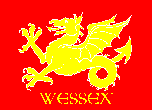 Follow the Royal Family Tree after King Alfred https://www.npg.org.uk/collections/explore/kings-and-queens-a-family-tree |
||||||||||||||||||||||||||||||||||||||||||||||||||||||
 Sources About Cerdic
|
|||||||||||||||||||||||||||||||||||||||||||||||||||||||
| The primary source of information concerning Cerdic and his sons is the "Anglo-Saxon Chronicle". Here are the entries which concern him. (Garmonsway, 1955.) 495. In this year two princes, Cerdic and Cynric his son, came to Britain with five ships, arriving at the place which is called Cerdicesora, and the same day they fought against the Welsh. 508. In this year Cerdic and Cynric slew a Welsh king, whose name was Natanleod, and five thousand men with him. The District was afterwards [or in consequence] called Natanleag as far as Cerdicsford. 519. In this year Cerdic and Cynric obtained the kingdom of the West Saxons, and the same year they fought against the Britons at a place now called Cerdices-ford. And from that day on the princes of the West Saxons have reigned. 527. Cerdic and Cynric fought against the Britons at the place which is called Cerdicsleag. 530 In this year Cerdic and Cynric obtained possession of the Isle of Wight and slew a few (or many) men at Whitgaraesburh. 534. In this year Cerdic passed away, and his son Cynric continued to reign twenty-six years. They gave all the Isle of Wight to their two nefan, Stuf and Wihtgar. 552. In this year Cynric fought against the Britons at the place called Searoburh [Old Sarum], and put the Britons to flight. Cerdic was Cynric's father. Cerdic was the son of Elesa, the son of Esla, the son of Gewis, the son of Wig, the son of Freawine, the son of Frithuguar, the son of Brand, the son of Baeldaeg, the son of Woden. The Chronicle then goes on to record how Ceawlin succeeded Cynric in the year 560, fought against the English king Aethelberht (who it notes was the first king to receive baptism), and slew two princes Oslaf and Cnebba at Wibbandun. In 577, Ceawlin and Cuthwine fought the Britons at Dyrham, slaying three kings Coinmail, Condidan, and Farinmail, and capturing Gloucester, Cirencester, and Bath. In 584, Ceawlin and Cutha fought the Britons at Feranleag, capturing many villages and countless booty. Cutha was slain, and Ceawlin departed in anger to his own lands. In 592 there was great slaughter at Adam's Grave and Ceawlin was expelled. In 593, Ceawlin perished. As many historians have pointed out, there are some problems with these accounts. They give an impression of a bitter unceasing struggle between English and British, an image also supported by Geoffrey. However, things might not have been nearly so polarized as they appear. Certainly there was warfare, but even in the Chronicles, it was often English fighting English, and according to Gildas and others, British fighting British as well. Although the Anglo-Saxon Chronicle is generally considered relatively objective, it clearly omits Saxon defeats, suggesting an anti-British bias. During the two hundred-plus years between the events in question and their recording in the Chronicle, more balanced perspectives on sixth-century events must have certainly been lost. A second argument against polarization is that Elesa, Cerdic, Cynric, and Ceawlin all have Celtic, not Anglo-Saxon, names. We will discuss this in more detail later. They appear to be Celtic leaders leading English warriors. This is not inconsistent with the accounts from other sources. Gildas condemned the British kings for using pagan warriors. Third, the archeology of Wessex implies accomodation rather than conflict. Salway (1984, p478), points out that the dominant culture of early Wessex seems to be not Anglo-Saxon, but Roman. Alcock (1971, p312) points out that the laws of Wessex provided for wealthy Welshmen, who appear to have been living alongside the English. . |
Whittock's discussion also supports this (1986, p186). He points out that the Anglo-Saxon Chronicle seems to deal only with the Gewisse--the royal house of Wessex and its associated warband, ignoring the large population of Saxons already settled in the upper Thames valley. It was the merger of this West Saxon community with Cerdic's royal family which created the kingdom of Wessex. Romano-Saxon pottery in the Thames Valley, dating from before 410, is evidence of the presence of Germanic troops stationed there. There is evidence of other English settlements throughout the 400s, such as Dorchester on Thames, northwestern Berkshire, and Oxfordshire. The Saxon settlements were continuous from Roman times, and mingled with Romano-Celtic ones. By the early sixth century, Thames Valley Saxons were spreading into Gloucestershire and Warwick-shire. Whittock presents a critical analysis of the Chronicle. He suggests that the dates are unreliable although the sequence is roughly correct. Concerning the Celtic names of the Saxon leaders, he grants the possiblity suggested by Morris (1973, p103), that Cerdic may have had an English father and a British mother. Whittock then presents various theories of the name `Gewiss'. He notes that it was used by Bede and the Annales Cambria, and that it may have meant `confederates'. We would like to add one more possible meaning--that the word meant essentially the same as it does in modern German--`known' or `assured'. That is, it describes English who were known to the governing officials, and whose loyalty was assured, as opposed to strangers, or English of doubtful loyalty. A passage from Nennius' "Historia Brittonum" supports the idea that Cerdic was a Celtic leader of Saxons. (Barber, 1972). According to Nennius, "Hengist gave a feast for Vortigern, and his men, and his interpreter, called Ceretic, and no other Briton among the Britons knew Saxon except this man; and he applied himself to acquiring a knowledge of it [or to reading it] until he was able to understand the Saxon speech." If we credit this passage, then it may well be that of all the Celtic leaders, only Ceretic was an effective leader of Saxon warriors, at least for a time. The passage does not indicate WHICH Ceretic is the subject, but certainly Cerdic of Wessex would have to be a prime candidate. This does pose an age problem. The incident discussed by Nennius, in which Ceretic was serving as an interpreter, occurred fairly early, probably in the 440s. Whittock suggests that Cerdic died around 516. If he were born around, say 427, then he would have been very young as an interpreter in the 440s, but not impossibly so. If he died in the period 505-516, he would have been over 80 years old--again not impossible. Note that he had a grown son or grandson, Cynric, in 495. Another point which Whittock makes is that the most common versions of the Chronicle give Cynric much too long a reign. This can be partly explained by the inclusion of an intermediate king, Creoda, who is mentioned in the Abingdon manuscripts of the Chronicles. We will discuss Creoda again, later. Cerdic is also briefly mentioned in the History of the Kings of Britain by Geoffrey of Monmouth: (Geoffrey, VI-13): Hengist said unto [Vortigern]. . . let us invite also hither my son Octha with his brother Ebissa, for gallant warriors they be; and give unto them the lands that lie in the northern parts of Britain nigh the wall betwixt Deira and Scotland, for there will they bear the brunt of the barbarians' assaults in such sort that thou upon the hither side of Humber shalt abide in peace." |
So Vortigern obeyed and bade them invite whomsoever they would that might bring him any strength of succour. Envoys accordingly were sent, and Octha, Ebessa, and Cerdic came with three hundred ships (Nennius says 40) all full of an armed host, all of whom did Vortigern receive kindly, bestowing upon them unstinted largesse. For by them he conquered all his enemies and won every field that was fought. . . In this passage, the mention of Cerdic is incidental, so there is no obvious reason why Geoffrey would have fabricated it. Geoffrey mentions it along with the visit of Germanus in 446-7, and if it is true, it implies a long period of activity for Cerdic. This raises another question. If Cerdic were in Britain in the 440s, how is it that he came to Britain in 495? And where did he come from? And why? A possible answer lies in the turmoil in Gaul in the 490's. According to Geoffrey Ashe (1985, p56), the Visigoth king Euric may have captured a large number of British troops and settled them as vassals in western France after he defeated the British king Riothamus in Gaul around 470. It is possible that Cerdic had been captured at this time, and settled at Nantes or Vannes as a vassal king within the Visigoth empire. It was around 495 that Clovis expanded his territory to south of the Loire River, at the expense of the young Visigoth king Alaric (Euric's successor). When Clovis advanced, Cerdic felt threatened, and would have had to relocate dispossessed vassals. The time was ripe for a return to Britain, so he seized control of territory around Southampton. As we shall discuss later, there is evidence that Cerdic was indeed active in both Britain and Britanny. Furthermore, it may well be that in moving to Southampton, Cerdic was returning to one of the homes of his youth. As we shall see, there is a speculative possibility that he may have lived near Winchester as a child. The citations of Cerdic by Nennius and Geoffrey mention a large fleet, and in our view, this is essential to understanding the role of Cerdic. His father had been associated with ships, as indicated by his title, "Master of the Sea," which will be discussed later. But shipping in northwestern Europe at this time was dominated by what Sidonius Apollinaris called "the curved ships of the Saxons". (Morris, 1973, p93) Thus from his youth, Cerdic was intimately involved with ships and Saxons. As further evidence of this, recall that the Visigoths had been stopped in the early 400s by less than thirty kilometers of water at Messina and Gibralter, and then suddenly in late 400s we hear of Gothic admirals coursing the western seas, and supplying tribes along the lower Rhine against their enemies, the Franks. But seamanship has never been acquired quickly. Euric must have acquired a fleet--perhaps Cerdic's. In summary, the Anglo-Saxon Chronicle, written centuries after the Arthurian/Cerdicean era, is an example of a history like Geoffrey's, influenced by the time-cultivated paradigm of continuous warfare of ALL Britons against ALL Saxons. Archaeology supports the conclusion that the earliest West Saxons were peaceful settlers mixed with, and possibly ruled by, Romano-British. Finally, Cerdic and his sons were of British heritage themselves. The evidence is that Cerdic was a chieftain of British origin who left and subsequently returned to Britain, and that he owed much of his success to his lifelong contact with Saxons. To dispel any remaining doubt that Cerdic was British, we will now show that Cerdic of Wessex is the same as a sixth century Welsh patriarch named Caradoc Vreichvras. |
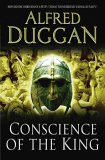 Conscience of the King by Alfred
Duggan
Conscience of the King by Alfred
DugganA thoroughly entertaining and convincing new take on the last days of the Roman Empire in Britain.
£7.99 Paperback 240 pages 198 x 129 mm ISBN: 0304366463 Publication: July 2005 Orion Publishing Group, Orion House, 5 Upper St Martin's Lane, London, WC2H 9EA tel: 020 7240 3444 www.orionbooks.co.uk
 CLICK ONTO OUR OTHER
INTERESTING SITES
CLICK ONTO OUR OTHER
INTERESTING SITES 